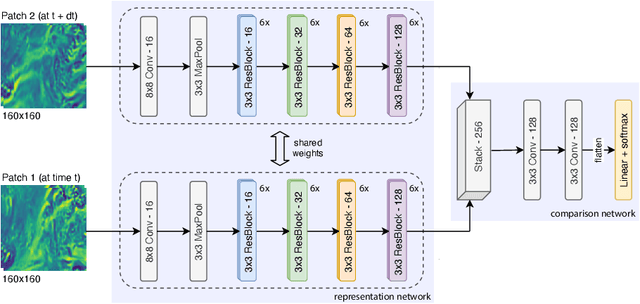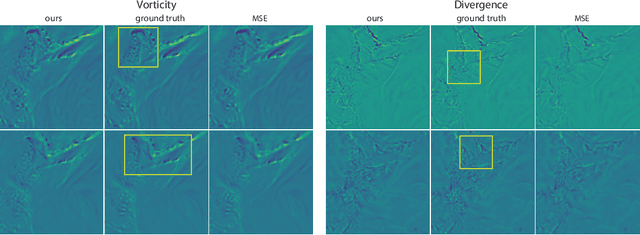Towards Representation Learning for Atmospheric Dynamics
Paper and Code
Sep 19, 2021



The prediction of future climate scenarios under anthropogenic forcing is critical to understand climate change and to assess the impact of potentially counter-acting technologies. Machine learning and hybrid techniques for this prediction rely on informative metrics that are sensitive to pertinent but often subtle influences. For atmospheric dynamics, a critical part of the climate system, the "eyeball metric", i.e. a visual inspection by an expert, is currently still the gold standard. However, it cannot be used as metric in machine learning systems where an algorithmic description is required. Motivated by the success of intermediate neural network activations as basis for learned metrics, e.g. in computer vision, we present a novel, self-supervised representation learning approach specifically designed for atmospheric dynamics. Our approach, called AtmoDist, trains a neural network on a simple, auxiliary task: predicting the temporal distance between elements of a shuffled sequence of atmospheric fields (e.g. the components of the wind field from a reanalysis or simulation). The task forces the network to learn important intrinsic aspects of the data as activations in its layers and from these hence a discriminative metric can be obtained. We demonstrate this by using AtmoDist to define a metric for GAN-based super resolution of vorticity and divergence. Our upscaled data matches closely the true statistics of a high resolution reference and it significantly outperform the state-of-the-art based on mean squared error. Since AtmoDist is unsupervised, only requires a temporal sequence of fields, and uses a simple auxiliary task, it can be used in a wide range of applications that aim to understand and mitigate climate change.
 Add to Chrome
Add to Chrome Add to Firefox
Add to Firefox Add to Edge
Add to Edge